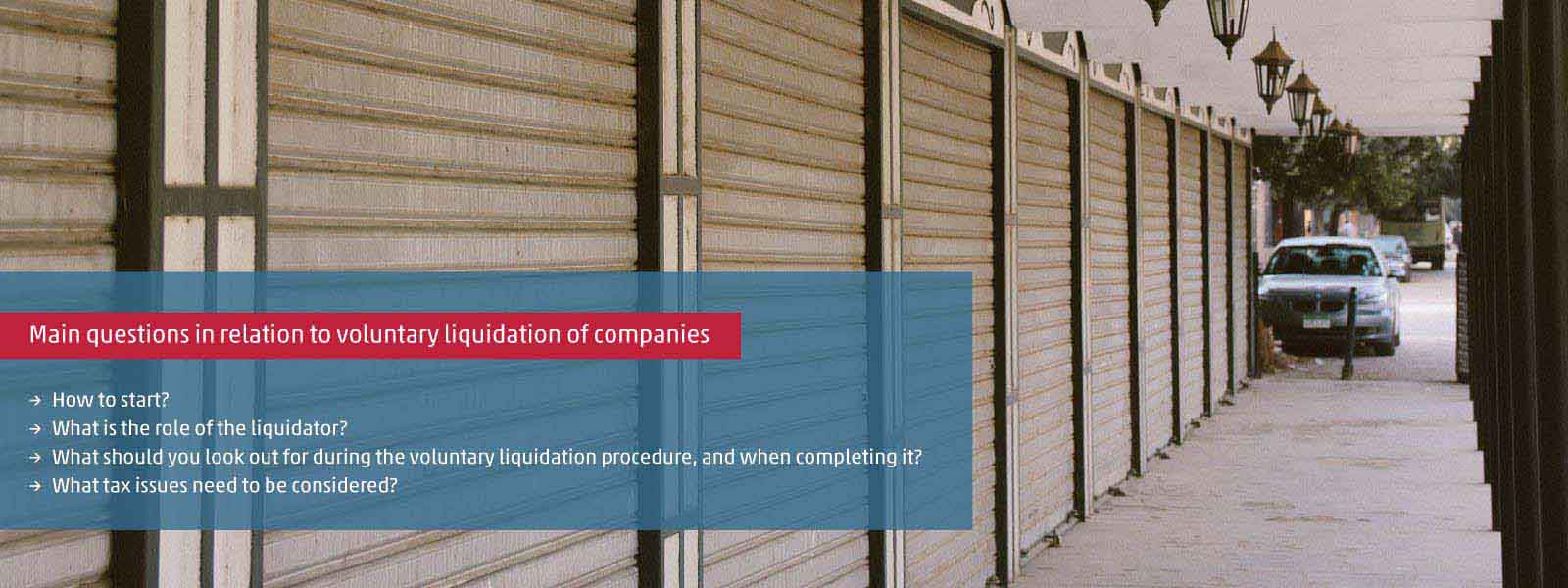Just like William Shakespeare said, “All’s Well That Ends Well”. This is particularly true when winding companies down in case of voluntary liquidations, when the owners can see no other solution but to terminate the activity. There is a large number of legal regulations related to voluntary liquidations. Since this is not an everyday task in terms of either accounting or taxation, it requires particular care. We would like to give you some guidance in this labyrinth in our series of articles dealing with voluntary liquidations.
What is the difference between liquidations and voluntary liquidations?
First of all, it is important to note that voluntary liquidations are not the same as liquidations. What they have in common is that both processes aim to dissolve the company. However, while liquidations are initiated by external parties, generally because of insolvency, voluntary liquidations are initiated by the owners, and they control the procedure until the very end.
What can be the reasons for initiating voluntary liquidations?
There may be several reasons why owners decide to initiate a voluntary liquidation. In the case of companies with an international background, the activity pursued in Hungary is often relocated to a country where wages are lower in order to optimise costs. Changes in market conditions or in legislation can also be reasons for dissolving a company, while project companies are originally established for a fixed period only anyway.
The beginning of the “end”
If a company is terminated without a legal successor, and it is not insolvent, this is considered a voluntary liquidation. A decision from the owner is required for such voluntary liquidations. In the decision, the start date of the voluntary liquidation and the liquidator need to be specified. The start date of the voluntary liquidation may not be earlier than the date of the relevant decision. The managing director’s assignment is terminated from the start date of the voluntary liquidation, and the liquidator represents the company from this date onwards. The company’s former managing director is responsible for ensuring that the company prepares financial statements as of the day before the start date of the voluntary liquidation terminating its activity, and submits its final tax returns.
Tasks during process of voluntary liquidation
Creditors may submit their claims within 40 days of the announcement on the commencement of the voluntary liquidation. The liquidator prepares a register of the claims and sends it to the Court of Registration in Hungary. Taking into account the creditor claims listed under the reported claims, the liquidator must prepare a corrected opening balance sheet for the voluntary liquidation as of the start date of the voluntary liquidation. If it transpires from the opening balance sheet that the company’s assets will presumably not cover the creditors’ claims, and the owners will not provide the missing amount within 30 days, the liquidator has to initiate the liquidation procedure at the competent court in Hungary without delay.
In addition to this, the liquidator is also responsible for collecting receivables, satisfying creditor claims, terminating existing contracts, terminating the employment of the employees, selling the assets if necessary, and distributing the remaining assets among the owners.
A voluntary liquidation must be completed within 3 years of the start date. During this period, financial statements must be prepared and published for each 12-month period, and the period closing the voluntary liquidation, as a financial year, while annual tax returns must also be submitted. During and when completing voluntary liquidations you can expect to have a tax authority inspection, so it is advisable to evaluate the tax risks of the company and take the necessary steps to eliminate or minimise these risks.
Ending the voluntary liquidation procedure
If there are no obstacles to ending the voluntary liquidation – because the activity has been terminated, all creditor claims are satisfied, debts have been collected, contracts with employees and partners have been terminated, and the assets for sale have been sold – the liquidator must prepare the financial statements for the last period of the voluntary liquidation and submit the final tax returns. In addition to this, the liquidator has to make a recommendation for the distribution of the remaining assets.
A voluntary liquidation is not a routine task in the life of a company. To avoid potential tax risks you are advised to consult with an expert. Feel free to contact the professionals at WTS Klient Hungary, who will be happy to evaluate the risks that may arise during the voluntary liquidation in terms of both tax and accounting issues.











